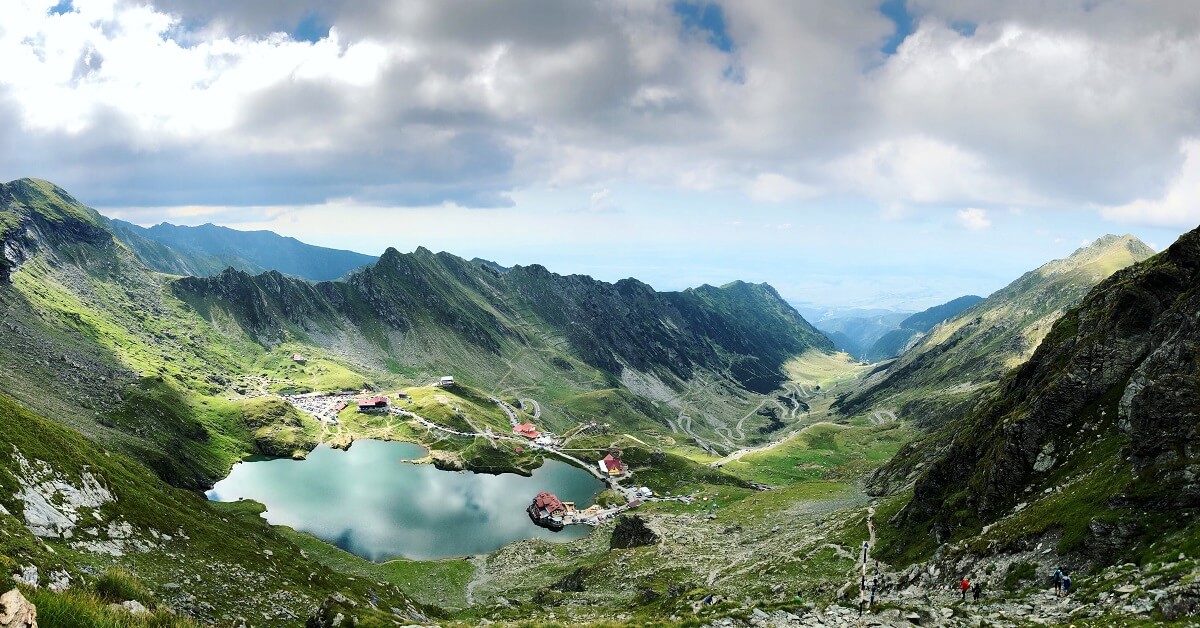
Romania, as many ex-communist countries, tends to erase communism from history. Often people see it as a mistake that brought misery and sadness. For example, some voices wanted the House of Parliament demolished after the fall of communism and the memory of Ceaușescu erased. On the other hand, the fear that by promoting communist sites, the terrors and suffering of people will be diminished exists. However, in order not to repeat the errors of the past, it’s important not to forget, but accept and understand.
In recent years, several places associated with communism were promoted. They attract foreign tourists, but also younger generations that want to understand the past.
Communism in Romania
The Red Army occupied Romania for 14 years between 1944 and 1958. During this time, Romania was made a Soviet satellite state. Its industries were nationalized, as well as many private properties. But landowners didn’t give up on their lands without a fight. Some even burnt their farms down so that they didn’t get into the arms of the Red Army. Stalin ”looked after” the energetic resources, hospitals, movies and media of the country. Education was controlled. “Unfit” books were banned and religion was restricted. By 1958, the Soviets left and in 1965, dictator Nicolae Ceaușescu was in power. He ran the country following the communist ideas until 1989, when he was judged, condemned and killed on Christmas Day.
Museum and exhibitions dedicated to Communism in Romania
The Memorial of the Victims of Communism and of the Resistance in Sighetu Marmaţiei, Romania
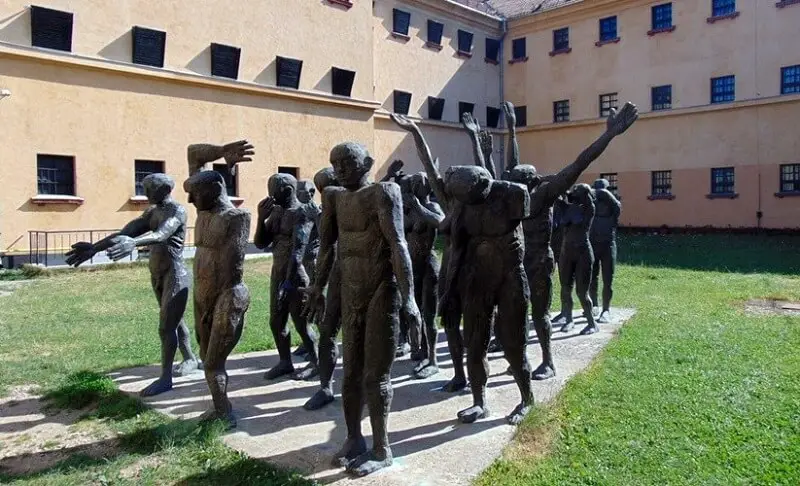
In Romania, the most relevant attempt to introduce and promote communist heritage is The Memorial of the Victims of Communism and Resistance in Sighetu Marmației, Maramureș region.
Younger people in Romania have only known communism from the stories of their parents and grandparents. This museum gives them, as well as the foreigners that have never experienced communism, the chance to see what it was really like. The Communism Exhibition takes them back in time from the stronghold of the Soviets on Romania in 1945 to the withdrawal of the Soviets and the Uprising of 1984.
They get to see the conditions in which the political prisoners were held and letters written by the families of detainees. Longing, care, fear, love and the hope of a close reunion transpass time. Such an experience clarifies things that would otherwise stay confusing or even be forgotten, like food queues, the destruction of villages, forced urbanization, lack of freedom, State Security.
The high number of tourists shows a real interest in “red tourism” and the heritage it promotes. Seeing this, other places also got the courage to open their doors for tourists.
Museum of Living in Communism in Brașov, Romania
The Museum of Living in Communism is set in a three rooms apartment from a working class district in Brașov (“Stalin City” in communist times). Coincidentally or not, the apartment is on Liviu Cornel Babeș street. It was named after a man that on the 2nd of March 1989 set himself on fire on a slope in Poiana Brașov in protest against the regime of Ceaușescu.
The apartment is a real time capsule. Visitors can find out who Ceaușescu was and how people used to live in communism. On a wall in the bedroom, one can admire a carpet of The Abduction from the Seraglio. That could be seen in many Romanian homes before 1989. One will also find linoleum on the floor, communist furniture, a glass fish sitting on a functional TV with lamps, the collections of Cutezătorii and Scânteia magazines and a Flacăra almanac from 1990. The last one has the image of Nea Nicu, the Romanian communist leader, on its cover.
For 60 euros per night, tourists can spend a night in the Museum of Living in Communism, obviously without internet and enjoy some of the “delights” of the so-called austerity gastronomy.
Nicolae Ceaușescu Memorial House from Scornicești
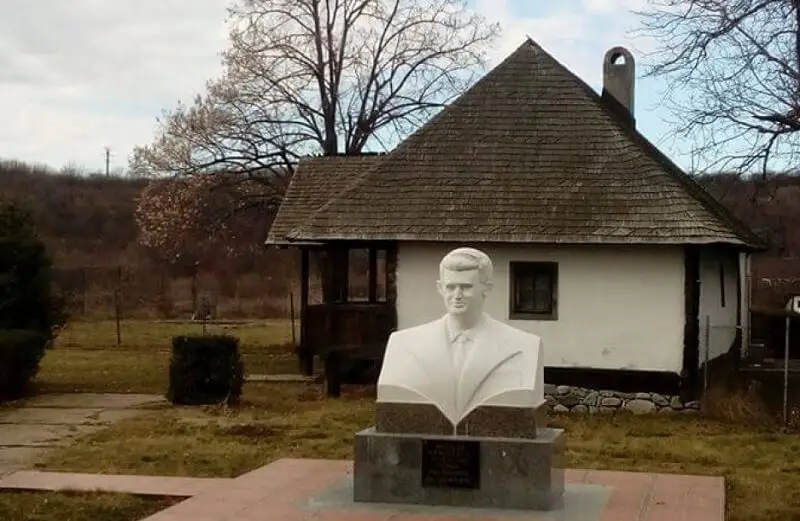 In the town of Scornicești is located the house in which, on the 26th of January 1918, Nicolae Ceaușescu was born. Nea Nicu was born in a peasant family with 10 children. His father was a tailor and owned some land and sheep. His mother was a hard working housewife. Nicolae attended four classes at the school in the village. There the teacher held simultaneous classes for students of several ages in the same room. He had no books and often went to school barefoot.
In the town of Scornicești is located the house in which, on the 26th of January 1918, Nicolae Ceaușescu was born. Nea Nicu was born in a peasant family with 10 children. His father was a tailor and owned some land and sheep. His mother was a hard working housewife. Nicolae attended four classes at the school in the village. There the teacher held simultaneous classes for students of several ages in the same room. He had no books and often went to school barefoot.
At the age of 11, Ceaușescu went to Bucharest and was hired as an apprentice cobbler. He also became a member of the Communist Youth Union of Romania political formation and was arrested several times because of communist propaganda. Later on, he became the general Secretary of the Romanian Communist Party, Head of State of the Socialist Republic of Romania from 1967 until the fall of the communist regime, on the 22nd of December 1989.
The house itself was built around 1890 and renovated in 1979. In addition to the original furniture that belonged to Ceaușescu, the house contains objects specific to that period, kitchen utensils, dowry boxes. Visitors can also see family paintings and a painting with Ceausescu at the age of 14, from the period when he was first arrested. He received the picture as a gift in the first years of his leadership. Admission to the Nicolae Ceaușescu Memorial House is free.
Museum of Communism in Târgoviște
The museum from Târgoviște is one of the most macabre in Romania. Visitors can see the former military barracks where the Ceaușescu couple spent their last moments. In the barracks, the plates they ate their last meal from and their beds are still on display. The tour also includes the small room in which they were secretly judged and convicted. On the 25th of December 1989, Christmas Day, while most Romanians celebrated, Nicolae Ceaușescu and his wife Elena were sentenced to death and executed within minutes after sentencing. At the execution place, two white paint outlines suggest the fallen bodies.
Museum of the Communist Consumer in Timișoara
A typical communist apartment was loaded with everything that Romanians used to buy before 1989. The owners started to collect anything related to the communist times. Now the exhibition includes party cards, water pistols, dishes, notebooks, diaries, cartoons, watercolors, dolls and classic glass fish. The apartment consists of a living room, a bedroom, child’s room and a kitchen. They all look as they could be inhabited and will take you back to the communist period. Visitors are encouraged to search everywhere.
Museum of Collectivization in Tămășeni, Neamț
The museum in Tămășeni is the first one that evokes exclusively the drama of the Romanian peasant, victim of the communist agricultural collectivization. Between 1949 and 1962, agricultural tools, animals and land were confiscated and the peasants were forced to enroll in collective farms. Even the house that hosts the current museum was abusively transformed into the headquarters of the Militia and a village shop. The ones that didn’t want to give up the status of landowners were detained and thrown into communist prisons. The peasantry organized riots against the communist abuse. But they were suppressed in blood. This museum is the expression of the drama of the Romanian village, hit by the communist collectivization action. The universe of the village was shattered by the Bolshevik ideology, brought from the USSR, with the tanks of the Red Army.
Memorial exhibition “Resistance and repression in Bihor”
The basement of Oradea fortress hosts another one of the few exhibitions in Romania dedicated exclusively to the memory of the former political prisoners who endured the horrors of the communist Gulag. The memorial occupies 10 rooms, each with a separate theme. One of the rooms shows the events that preceded the full establishment of the communist regime in Romania and the location of the repression centers in Bihor. In another room, visitors can watch a movie with the interviews of former detainees. Another one is dedicated to the center that existed in the fortress. The other rooms present aspects as State Security, anticommunist organizations, religion or the peasant revolts of 1949.
The evolution of Oradea in the communist regime (1945-1989)
The permanent exhibition at the museum of the city includes objects donated by collectors and people of Oradea through a campaign entitled “Don’t throw away the past. Bring it to the museum”. Some of the most attractive exhibits are trinkets, televisions, radios, counters, medals, pens, money, stamps, toys, school uniforms and textbooks. All of them are relevant to the communist era. The most valuable of them is a book of Directives of the IXth Congress of the Romanian Communist Party, from 1966. The exhibition is completed by several photographs, some original, with reference to the policy of industrialization, systematization and urbanization or the working visits of Ceaușescu.
Museum of Communism in Hunedoara
“Romania’s steps through socialism and democracy” is an impressive collection of objects dating back to the communist era of Romania. The pieces of resistance are the military uniforms, orders and distinctions gathered from military personnel in reserve. Other interesting objects are old TVs with glass fish on top, radios, trinkets disk phones and paintings that one could find in many Romanian houses before the revolution. Visitors can also check a small classroom, with benches, plates, textbooks and ”pioneers” wearing the famous blue school uniforms.
Former political prisons in Gherla, Aiud, Pitești or Râmnicu Sărat
There are also smaller memorial exhibitions in former political prisons in Gherla, Aiud, Pitești and Râmnicu Sărat. The exhibitions try to reconstruct moments of life in prison (diet, punishments, ways of communication, medical treatment, isolation). This was they keep alive the memory of those imprisoned there. Besides the permanent exhibitions, these places encourage people to find out more about the past through cultural events and educational programs on topics related to anticommunist political detention.
Transfăgărășan, Romania – an achievement of communism
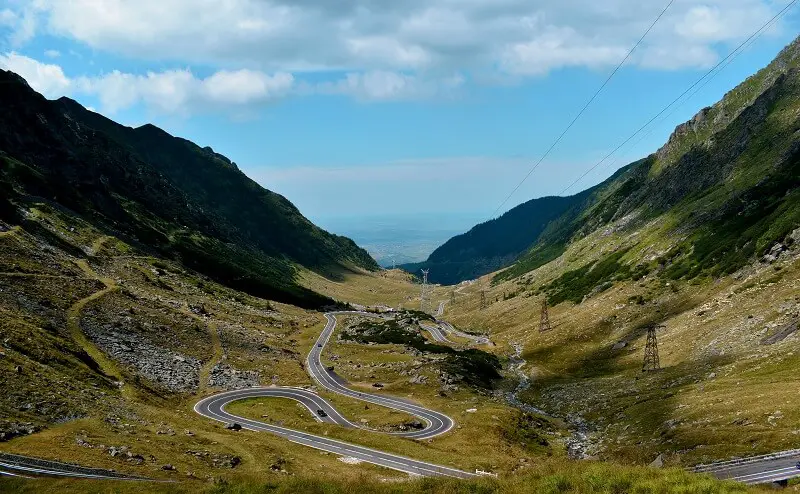
Transfăgărășan is nowadays one of the most beautiful mountain roads in Romania and in Europe. While driving along it and watching the picturesque landscape, you can’t think of the dark communist past of Romania. And still they are strongly connected. The 90 km long road was built in just 4 years, between 1970 and 1974. The reason for it was that Nicolae Ceauşescu desired a strategic military route through the Carpathians. It was designed to connect two historic regions, Transylvania and Wallachia. Because of the climate, hard work and lack of training in blasting techniques, the road had a high human cost, besides the financial one. Official records state that 40 soldiers lost their lives, but unofficially the deaths were estimated to hundreds.
Colibița, Iron Gates, Bezid and many other water storage lakes and hydroelectric power plants

Obtaining electricity by burning fossil fuels brought high costs. So the Soviets started to copy the American model of electrification. Of course, Romania had to follow. Cheap labor to build the megastructures and spaces to be flooded could be easily found through the great homeland of the proletariat. The flooding of the country started with the hydroelectric power plant on Bistrița. It continued with Iron Gates I, when the city of Orșova disappeared under the water. Then Stânca-Costești dam on Prut swallowed 92 km2, seven Romanian villages and eleven Moldavian villages.
Expropriations were made and people were forced to move to cities. Usually, people were informed about the relocation only one or two days in advance. They could barely take some of their belongings with them. Entire traditional villages disappeared under the waters in no time. The construction of all these dams, besides huge investments, also meant years of uninterrupted work. More often than not, workers died because of exhaustion and lack of security measures. On the other hand, the dams regulated the course of the rivers, which stopped the floods in those areas and provided energy. Nowadays, most of this lakes are also used for leisure and relaxation, as they are usually in picturesque areas. Examples of this are Colibița in Bistrița-Năsăud, Stânca-Costești on Botoșani, Bezid in Harghita and many many more.
Exhibitions that explain the relocation of people and construction of the dams
In order to find out more about the relocation and construction of the dams, one can visit the Museum of Iron Gates I where there’s an exhibition dedicated to Ada Kaleh, the island that disappeared under the lake. Another museum that has an exhibition dedicated to this subject is the Rhedey Castle in Mureș. The castle belonged to a wealthy family that had family ties with the queen of England. It’s entire story is told on the guided tour. But there’s also a room that presents the drama of the people that lived in Bezid, a multicultural village that was flooded in order to create the lake we see today.
The ecological disaster of Geamăna, Romania
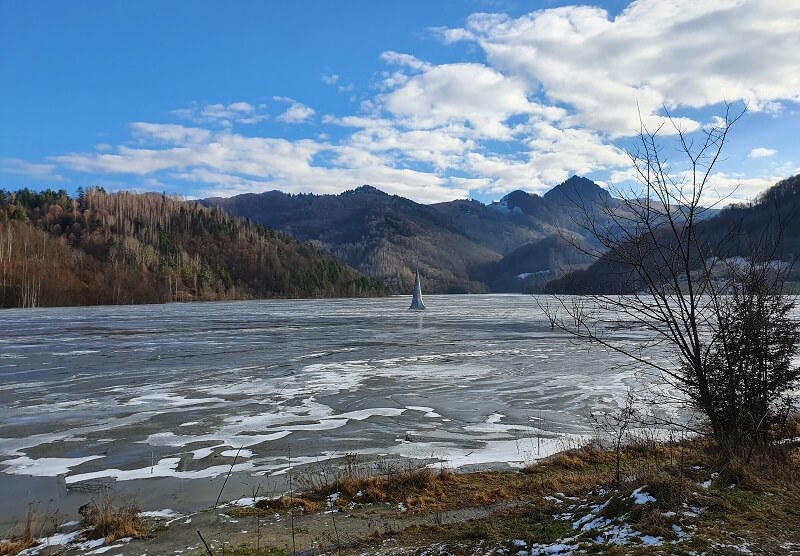
Once upon a time, in Geamăna, in the Apuseni mountains, there was a village. Now it is almost entirely covered by waste from the copper quarry at Roșia Poieni. Just as in the case of the artificial lakes, the locals were forced to move out in order to escape the invasion of the tailings. In time, the red and green mud covered houses, graves, gardens, the church, 100 m above the village heart, and the cemetery.
All this started in 1977, when Nicolae Ceaușescu decided to start the copper exploitation from Roșia Poieni. At that time, it was the largest in Europe. By 1980, more than 300 families were expropriated by the state for small amounts of money. In 1986, the tailings dump began, even if few hundreds people still lived there. Even today, there are some higher houses scattered around the lake in which around 20 people live. I can’t figure out what’s worse. To be expropriated for an amount of money for which one can’t buy another property or to continue to live there, surrounded by dump, isolated from the world and have no drinking water available.
The tower of the church is one of the few witnesses of the fact that there was once a human settlement. However, the mud almost reached its top. The pond that grows year by year will soon swallow it. Extremely acidic and basic waters flow through tributaries in the Arieş River and affect the entire area. In addition, the leaching of the tailings also produces effects in the area as the sulfuric acid and the sulphates of heavy metals reach the water and soil, generating the intense pollution of the hydrographic basin.
Union Square, Square House and the Communism train in Iași, Romania
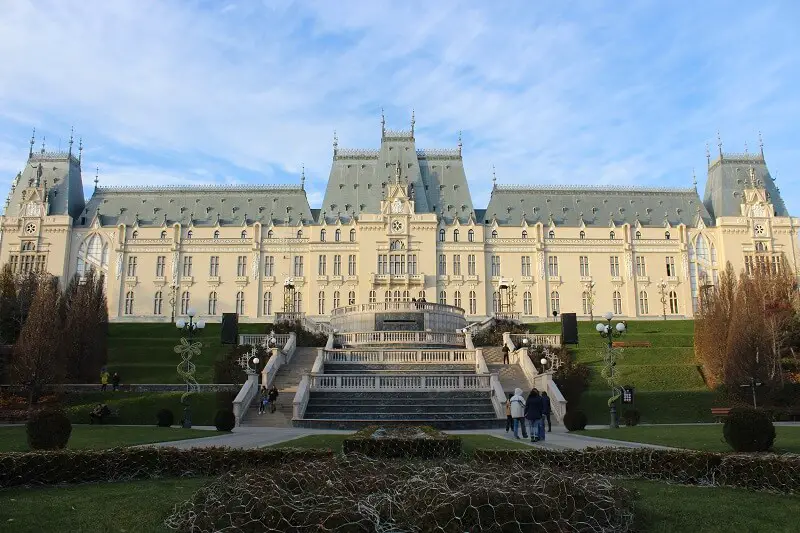
The Moldavian capital, Iași, with its Square House and the buildings in Union Square are relevant for the communist period. They were built fast, as all the buildings during that period. Historic buildings were demolished to obtain the needed space and they follow the socialist architectural guidelines.
In order to build the Square House, Scala cinema, The Danube restaurant and other merchant’s shops were demolished. This is where the County Party Committee functioned and Nicolae Ceaușescu had his office during his visits to Iași. The balcony of the office was oriented towards the Palace Square, where the crowds gathered to listen to the Comrade’s speeches. Nowadays the building hosts the County Council and the Prefecture.
In Union Square, “Hora Unirii” was danced for the first time on the 24th of January 1859. During communist times, it was redesigned according to the needs of the working-class. Huge blocks of flats were quickly built. The square was embellished with mosaics immortalizing themes of communist propaganda such as: agriculture, forest, industry, peace, art and history. Union Square became the main meeting place and host of public manifestation of the communist regime. Some say this is also where the Romanian Revolution started, on the 14th of December 1989, before the one in Timișoara, on the 16th.
Each Saturday, The Communist Tram, a perfectly reconditioned tram built in the Communist period takes visitors on a guided city tour. The route helps tourists discover the transformations of the city during communism, the industrial area, State Security and the Revolution in 1989.
Conclusion – Communism tourism in Romania
Romania still has many open wounds and people are still not fully open to this type of tourism. Some are afraid that it might have bad effects as there are still people that believe it was better than the current regime and a feeling of dangerous melancholia arises. Others are still not ready to share their experiences. However, steps are being done in this direction. For many it became a way of making peace with history and attract tourists, as communism sells.
I know you must be wondering why there is no museum or tourist attraction from Bucharest on this list. The reason is that there were too many to include them here. I decided to dedicate them a separate article in the near future.
Travel With A Spin contains affiliate links. If you make a purchase through these links, I will earn a commission at no extra cost to you. Thanks for reading!
